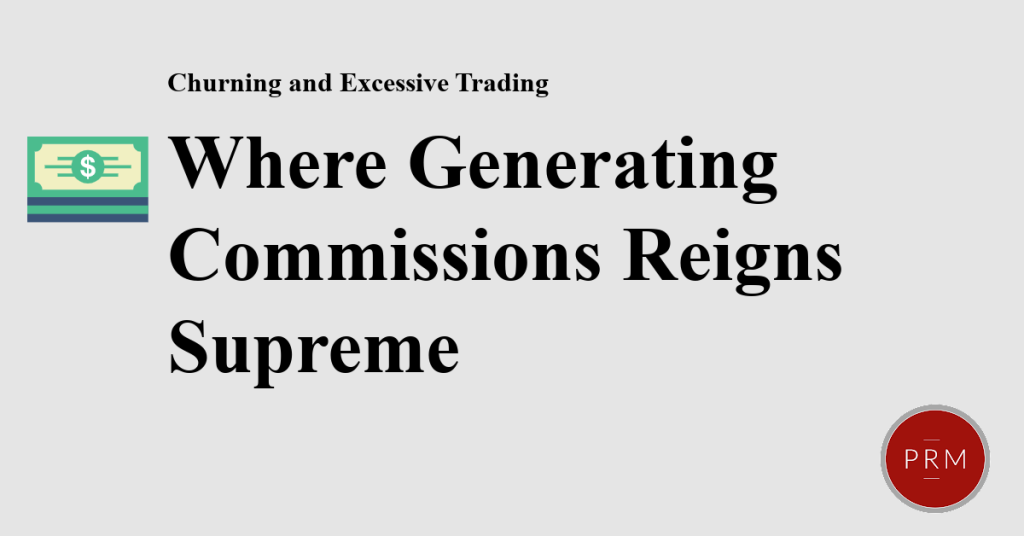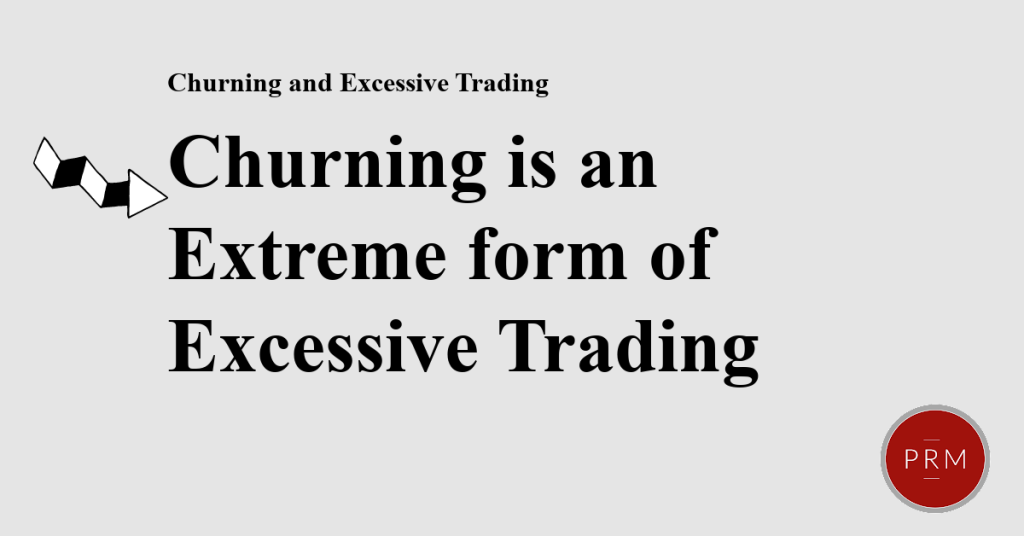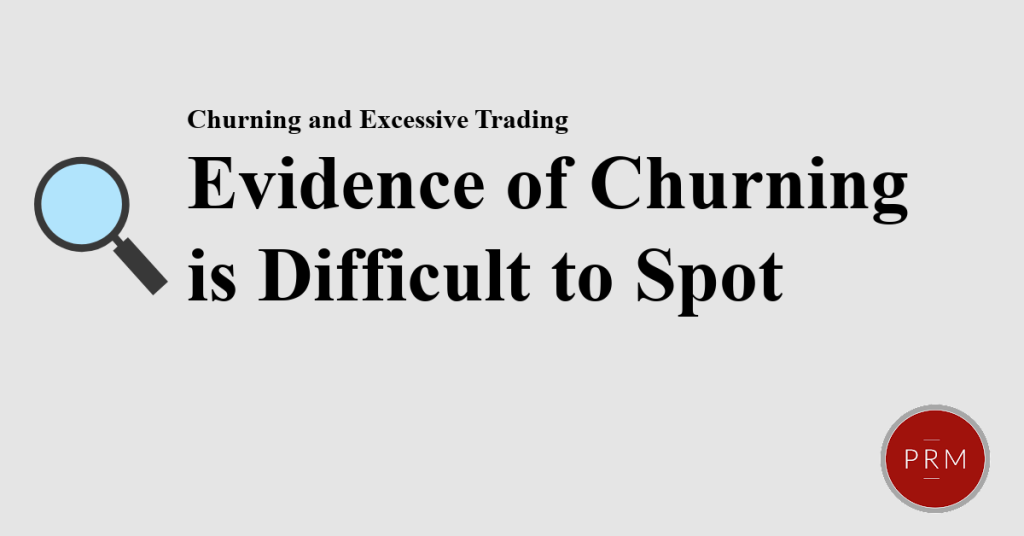Churning and Excessive Trading
Overview

What’s the difference between Churning and Excessive Trading?

Both churning and excessive trading refer to the situation where a broker makes numerous trades in a customer’s account designed to generate commissions for himself. FINRA considers churning a more egregious variation of excessive trading. FINRA’s deputy head of enforcement has described churning as follows, “[Churning refers to] the situation where not only did the broker execute an excessive number of trades in the customer’s accounts, but he or she did so with either an intent to defraud or with reckless disregard for the customer’s interests.”
What Type of Investor is at Risk of Being a Victim of Churning?
Unauthorized Trading and Churning Often Go Hand-in-Hand
How do you Identify Churning?

Churning is difficult to identify because the commissions are generally omitted from the customer’s monthly statements. Most customers have no idea that the commissions they pay their brokers are omitted from their monthly statements. Brokerage firms omit commissions from monthly statements precisely so customers remain ignorant about what they pay in commissions and fees.
What to do if you Suspect Churning?
*The Law Offices of Patrick R. Mahoney is a full service law firm with extensive experience litigating cases involving a host of securities-related issues. This page is for information purposes only and does not constitute legal or investment advice; nor is it a comprehensive explanation of all churning of excessive trading issues. If you believe you have a claim, you should speak to competent counsel to better understand your options. Or, contact us.*
